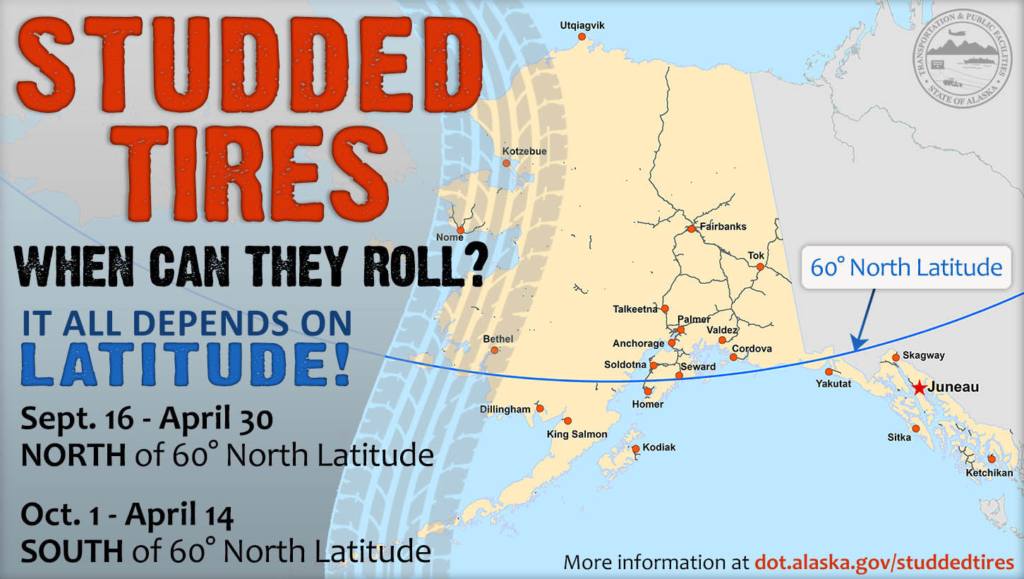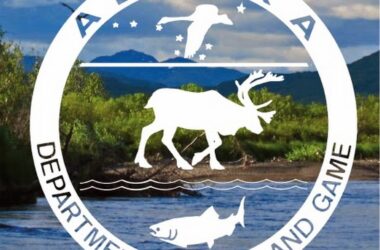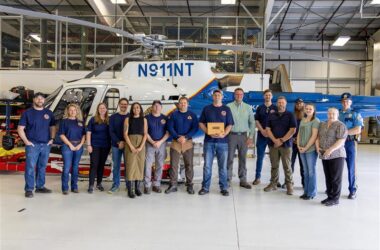Winter is approaching, and studded snow tires will be permitted on vehicles north of the 60° North Latitude on Thursday, September 16. North of the 60° North Latitude include all communities north of Ninilchik.
Shannon McCarthy, Public Information Officer for the Alaska Department of Transportation and Public Facilities told KSRM:
“Essentially, we require that people take off their studded tires in the late spring and summer and then allow them to put them back on this coming September 16th. The reason why we do that is we want to actually, when people don’t need studs, we want them off the roads so they cause less damage because studded tires on a warm road actually take quite a bit of chunks out of the road. It’s a little better when roads are cooler and it makes more sense, of course, when people need more traction.”
Snow tires will be allowed to be utilized starting September 16 in the northern portion of the Kenai Peninsula, but October 1 will be the first day for snow tires for every part of the state south of the 60° north latitude. South of the 60° North Latitude include Anchor Point, Homer, Kodiak and cities and towns in Southeast Alaska, except that at any latitude on a paved portion of the Sterling Highway a person may not operate a motor vehicle with studded tires from May 1 through September 16.
McCarthy also said:
“It allows people to put on their studs over a longer period of time so there’s not a big rush. That’s going back to the tire places as well. We are able to take a look at the weather and see what’s coming up. There’s always a little bit of a rush when we have our first snow, but fortunately, most of the time, our first snow is a dusting and just gives everyone that fair warning that you have got to start getting the vehicle ready for winter.”
Every year, Alaska State Troopers note a spike in motor vehicle accidents as the seasons change and fall leaves give way to early morning frost.
Troopers have made note to remind Alaskans that even with studded tires being legal, drivers must still pay attention and be prepared for the initial layers of ice that will soon develop as temperatures drop. They also remind drivers to begin slowing even more ahead of time when approaching intersections and stop lights, as sliding is always possible.
For more information, click here.







